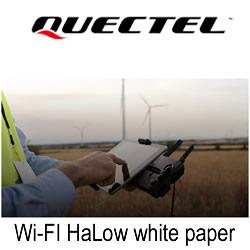Sensata Announces New Electrification Solutions for Megawatt Charging of Heavy-Duty Electric Vehicles
• Sensata’s new custom power management solutions include the High Voltage Junction Box for OEMs designing medium and heavy-duty electric trucks that can use megawatt charging systems. • Sensata’s unique contactor and fuse design meets the increased thermal performance that higher power charging requires while keeping the overall package size compact. • Strategic agreements to supply leading electric truck manufacturers demonstrate the value of Sensata’s solutions in electrification for the commercial vehicle market.
SWINDON, United Kingdom, November 3, 2021- Sensata Technologies (NYSE: ST), today announced its new High Voltage Junction Box solutions provide safe and reliable protection and power distribution for high power charging of commercial electric vehicles. The solutions include DC Charging Boxes that support megawatt charging of medium and heavy-duty electric trucks up to 850 Volts and 1300 Amps.
Combining Sensata's proven contactor, fuse, and controller technologies into a compact package, the new High Voltage Junction Boxes are custom designed for specific vehicle requirements.
Driven by the need for fast charging, electric vehicle manufacturers require systems that can handle higher charging power levels. "We have successfully optimized our contactor and fuse design to meet the increased thermal performance that megawatt charging requires while keeping within tight space constraints," said Brian Wilkie, Vice President, Heavy Vehicle & Off-Road at Sensata Technologies.
According to Mr. Wilkie, "Sensata's unique capability to design all the safety critical components of the solution (like contactors, fuses, control boards and software) in-house was instrumental in securing new strategic agreements with industry leaders for our custom power management and protection solutions, which help simplify our customers' production processes."
To meet current carry and temperature requirements, Sensata's cooling and temperature control technology directly interfaces to the busbars and provides exceptional cooling efficiency within tight space restraints. For additional safety, Sensata's isolation monitoring design ensures isolation of the high voltage from the chassis. The solutions' software and controllers are built on the AUTOSAR platform.
To learn more about the technologies behind Sensata's High Voltage Junction Boxes that are addressing the challenges of megawatt charging for electric trucks, visit www2.sensata.com/hvjb or contact us to speak to our experts about custom solutions.
About Sensata Technologies
Sensata Technologies is a leading industrial technology company that develops sensors, sensor-based solutions, including controllers and software, and other mission-critical products to create valuable business insights for customers and end users. For more than 100 years, Sensata has provided a wide range of customized, sensor-rich solutions that address complex engineering requirements to help customers solve difficult challenges in the automotive, heavy vehicle & off-road, industrial and aerospace industries. With more than 19,000 employees and operations in 13 countries, Sensata's solutions help to make products safer, cleaner and more efficient, more electrified, and more connected. Learn more at www.sensata.com and follow us on LinkedIn, Facebook and Twitter.
Featured Product

